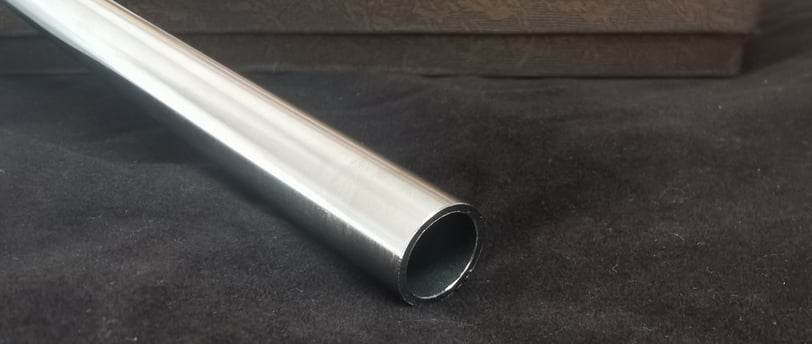Top Benefits of Corrosion-Resistant Tubing for Cleanrooms Efficiency
Explore the benefits of corrosion-resistant tubing for cleanrooms, including contamination prevention, extended lifespan, reduced maintenance, and compliance with cleanroom standards.
SHEENTUBE
11/7/20242 min read


Top Benefits of Corrosion-Resistant Tubing in Cleanrooms
Introduction
In cleanroom environments, where maintaining cleanliness and preventing contamination is critical, choosing the right tubing is essential. Corrosion-resistant tubing is especially beneficial, as it offers durability, supports strict contamination control, and reduces maintenance needs. Industries like biopharmaceuticals, semiconductors, and food processing rely on corrosion-resistant tubing to ensure consistent, high-quality production. Here are the top benefits of using corrosion-resistant tubing in cleanrooms.
1. Minimizing Contamination Risks
Corrosion-resistant tubing helps prevent contamination by resisting chemical reactions and degradation, which could otherwise introduce particles or contaminants into the cleanroom environment. This is especially important for industries like biopharmaceuticals, where even minor impurities can affect product quality. By choosing corrosion-resistant materials, cleanrooms can reduce the risk of contamination, maintaining a sterile environment and supporting product integrity.
2. Extended Tubing Lifespan
One of the major advantages of corrosion-resistant tubing is its extended lifespan. High-quality tubing materials, such as 316L stainless steel, are resistant to both chemical reactions and wear, which ensures longer service life. This reduces the frequency of tubing replacements, saving on costs and minimizing operational disruptions. In cleanroom settings, where equipment reliability is crucial, longer-lasting tubing supports consistent productivity and efficiency.
3. Reducing Maintenance and Downtime
Corrosion-resistant tubing requires less frequent maintenance, as it is better able to withstand rigorous cleaning and disinfecting processes without deteriorating. For industries dependent on continuous production, this reduced maintenance need translates into less downtime and fewer operational delays. In cleanroom environments where time and precision are critical, corrosion-resistant tubing ensures smooth, uninterrupted operations and maximizes productivity.
4. Supporting Compliance with Cleanroom Standards
Cleanrooms operate under strict regulatory standards to maintain safety and quality, especially in industries like pharmaceuticals and semiconductors. Corrosion-resistant tubing materials meet key certifications, such as ISO 14644for cleanroom standards and ASME BPE for biopharmaceutical applications, making it easier for facilities to maintain compliance. This also simplifies audits, as corrosion-resistant tubing is designed to withstand rigorous use while preserving the cleanroom's integrity.
Conclusion
Corrosion-resistant tubing is essential for cleanrooms, offering key benefits such as contamination control, extended lifespan, reduced maintenance, and regulatory compliance. These features make corrosion-resistant tubing an ideal choice for industries that require sterile, efficient, and cost-effective operations. Investing in high-quality, corrosion-resistant tubing not only enhances cleanroom performance but also supports long-term efficiency and safety.

Sheentube
High-quality stainless steel tubes for industries.
+86 15203012590
© 2024. All rights reserved.
